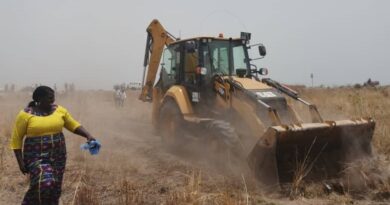New Population Estimates Place South Sudan’s Population at 13 Million
We bring you groundbreaking insights into South Sudan’s demographic landscape. After the national population and housing census, initially planned during the transitional period of the Revitalized Peace Agreement, could not take place, a comprehensive Population Estimation Survey has been conducted across the country, placing South Sudan’s population at 13 million.
This survey, carried out by the National Bureau of Statistics in partnership with key government ministries, academic institutions, and international organizations like UNFPA, provides up-to-date and crucial data on the nation’s population. These findings are set to reshape policy formulation, decision-making, and development planning in South Sudan.
A new report reveals critical employment figures across the country, highlighting significant disparities in job access, alarming child labor statistics, and a staggering national unemployment rate.
The employment landscape in South Sudan remains deeply troubling. Nationally, only 7% of women are employed, while a shocking 93% remain unemployed. Men face similar challenges, with just 10% of males in jobs, leaving 90% out of the workforce.
– Female Employment: 7% | Unemployment: 93%
– Male Employment: 10% | Unemployment: 90%
Even among educated groups, employment opportunities remain scarce. Among those with post-secondary or diploma-level education, only 29% of women and 34% of men are employed. The situation is nearly the same for university graduates, with 25% of females and 29% of males securing jobs.
– Post-secondary Graduates Employed: 29% (Females) | 34% (Males)
– University Graduates Employed: 25% (Females) | 29% (Males)
Disturbingly, child labor remains widespread across the country. 4% of children aged 10-14 and 5% of boys and 6% of girls aged 15-19 are engaged in labor, robbing them of their childhood and education.
– Child Labor (Ages 10-14): 4% (Both Genders)
– Child Labor (Ages 15-19): 5% (Boys) | 6% (Girls)
For women, employment is primarily in skilled labor and agriculture, with 48% of working women engaged in these sectors, while services and sales employ 16%. Men also dominate the agricultural sector at 33%, followed by the armed forces, which employ 13% of the male workforce.
– Women in Agriculture & Skills: 48% | Services & Sales: 16%
– Men in Agriculture: 33% | Armed Forces: 13%
Employment rates vary across regions. Central Equatoria leads the way, with female employment at 14% and male employment at 22%. Western Equatoria and Western Bahr El Ghazal also show slightly higher employment figures than the national average.
-Female Employment (Central Equatoria): 14%
– Male Employment (Central Equatoria): 22%
– Western Equatoria: Female: 12%, Male: 19%
– Western Bahr El Ghazal: Female: 10%, Male: 16%
The report also reveals that the majority of the working population is aged between 30 and 49, pointing to the need for stronger job creation strategies for younger people to secure South Sudan’s economic future.
As the nation faces these stark realities, the need for urgent and robust employment solutions is clear. With the majority of women and men out of work, and child labor still prevalent, it’s imperative for the government, private sector, and stakeholders to act swiftly.




